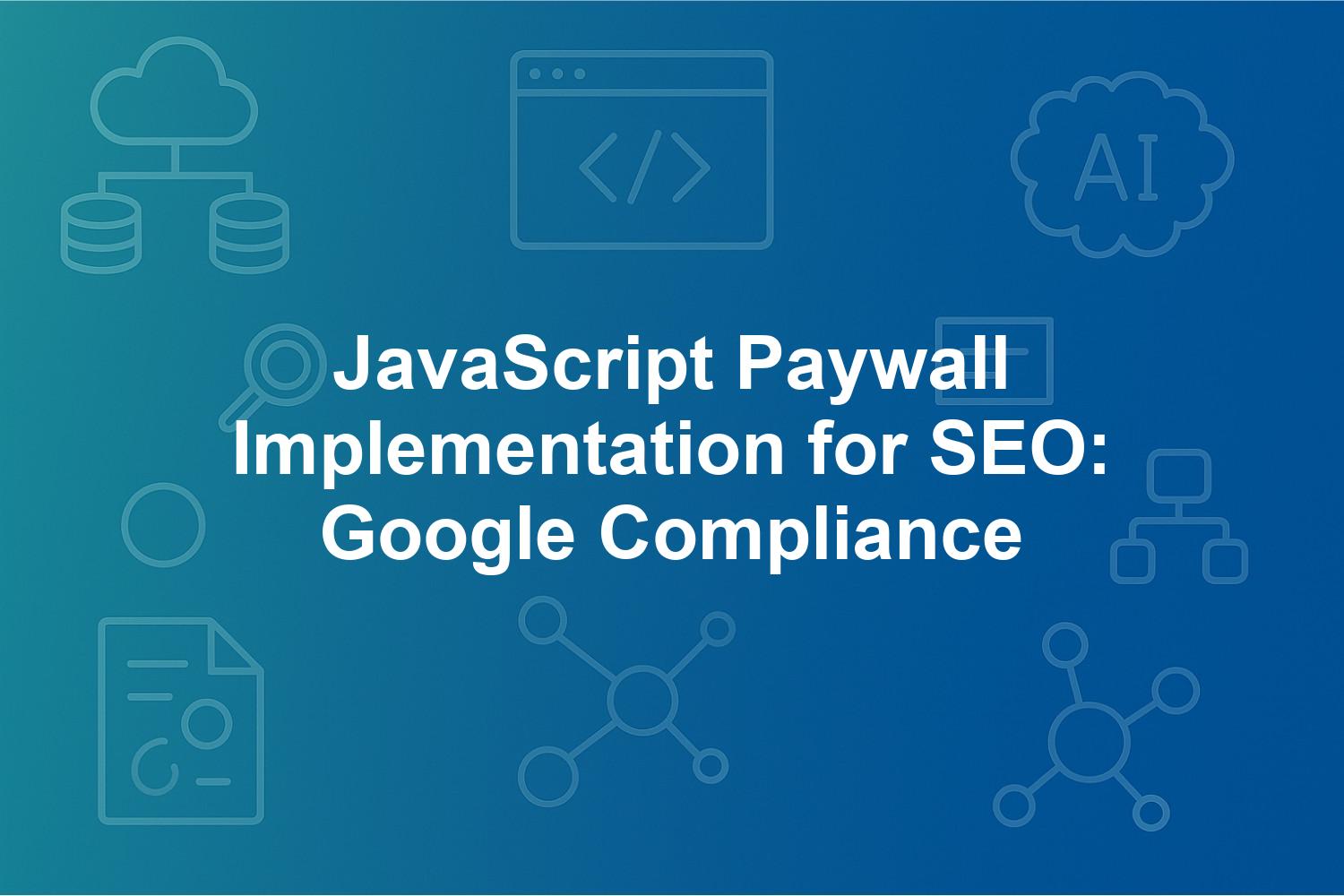Blog
JavaScript Paywall Implementation for SEO: Google Compliance

Implementing a paywall for your website can significantly impact user experience and SEO. For those utilizing JavaScript paywalls, ensuring compliance with Google’s guidelines is paramount. In this post, we’ll explore effective strategies for integrating a JavaScript paywall while maintaining search engine visibility. You’ll discover best practices, potential pitfalls, and actionable insights to help you navigate this complex topic.
Understanding Paywalls and Their Importance
What is a Paywall?
A paywall is a method used by online publishers to restrict access to their content behind a payment barrier. There are various types of paywalls:
- Hard Paywalls: Require the user to pay before accessing any content.
- Soft Paywalls: Allow limited access to content before requiring a subscription.
Why Implement a Paywall?
Paywalls serve multiple purposes:
- Revenue Generation: They provide a sustainable income stream.
- Content Valuation: This approach helps underline the value of quality content.
The Role of JavaScript in Paywall Implementation
Benefits of Using JavaScript for Paywalls
Utilizing JavaScript for your paywall can enhance user experience and allow for seamless interactions. Here are some advantages:
- Dynamic Content Loading: JavaScript enables content to load in a more interactive way.
- Improved Engagement: Customizable user interfaces can lead to higher user engagement.
Challenges with JavaScript Paywalls
However, using JavaScript comes with its challenges, particularly in terms of SEO:
- Search Engine Crawling: Google may face difficulties in indexing content that requires JavaScript to load.
- User Accessibility: Users with disabled JavaScript might miss out on content.
Ensuring Google Compliance
Adhering to Google’s Guidelines
To maintain compliance with Google’s guidelines while implementing a JavaScript paywall, consider the following strategies:
-
Use Progressive Enhancement:
- Ensure that essential content is accessible without JavaScript. This method allows Google to index your content more effectively.
-
Implement Structured Data:
- Utilize schema markup to provide search engines with context about your content. This can improve visibility and indexing.
- Monitor Page Performance:
- Regularly assess page speed and responsiveness. Google emphasizes user experience as a ranking factor.
Testing Your Paywall
Regularly test your JavaScript paywall to ensure it complies with Google’s standards. Use tools like Google Search Console to identify any indexing issues.
Valuable Insights and Best Practices
Tips for a Successful Paywall Implementation
- Freemium Options: Consider offering a freemium model where users can access a limited amount of content for free.
- User Notifications: Clearly inform users about paywalls and their benefits to improve conversion rates.
- Analyze Metrics: Track user engagement and subscription metrics to refine your approach continuously.
Examples of Effective Paywall Strategies
- Newspapers: Many modern newspapers use a combination of soft and hard paywalls, enabling users to sample content before committing to a subscription.
- Streaming Services: Platforms often provide a trial period to attract users and convert them into paying subscribers.
FAQs on JavaScript Paywall Implementation
Can a JavaScript paywall negatively affect SEO?
Yes, if not implemented correctly, it can hinder content indexing by search engines.
How can I test if my paywall is SEO-friendly?
Utilize tools like Lighthouse or GTmetrix to analyze how effectively your content is indexed.
Are there penalties for non-compliance with Google’s guidelines?
Failure to comply with Google’s guidelines can lead to lower rankings or de-indexing of your content.
Conclusion
Implementing a JavaScript paywall requires a carefully planned approach to ensure that it enhances revenue without sacrificing SEO. By adhering to Google’s guidelines, using best practices, and continually testing your setup, you can create a user-friendly experience that also ranks well in search engines. For more insights on web development and SEO, consider exploring additional resources, or check out our web development articles.
By following these strategies, you can maximize your paywall’s potential while maintaining compliance and optimizing for search engines.

